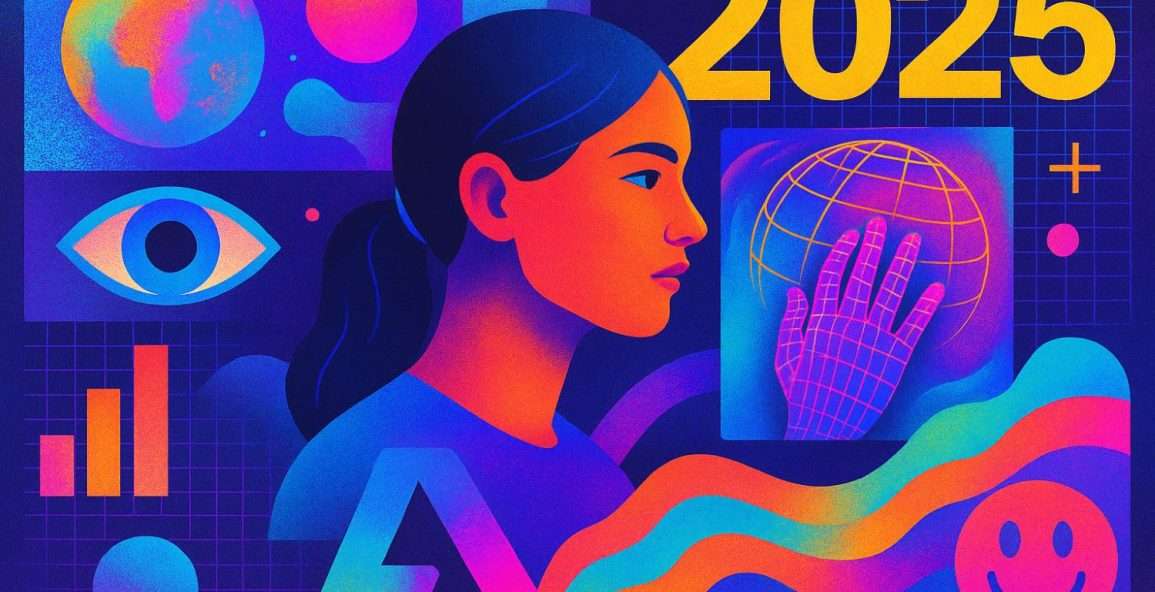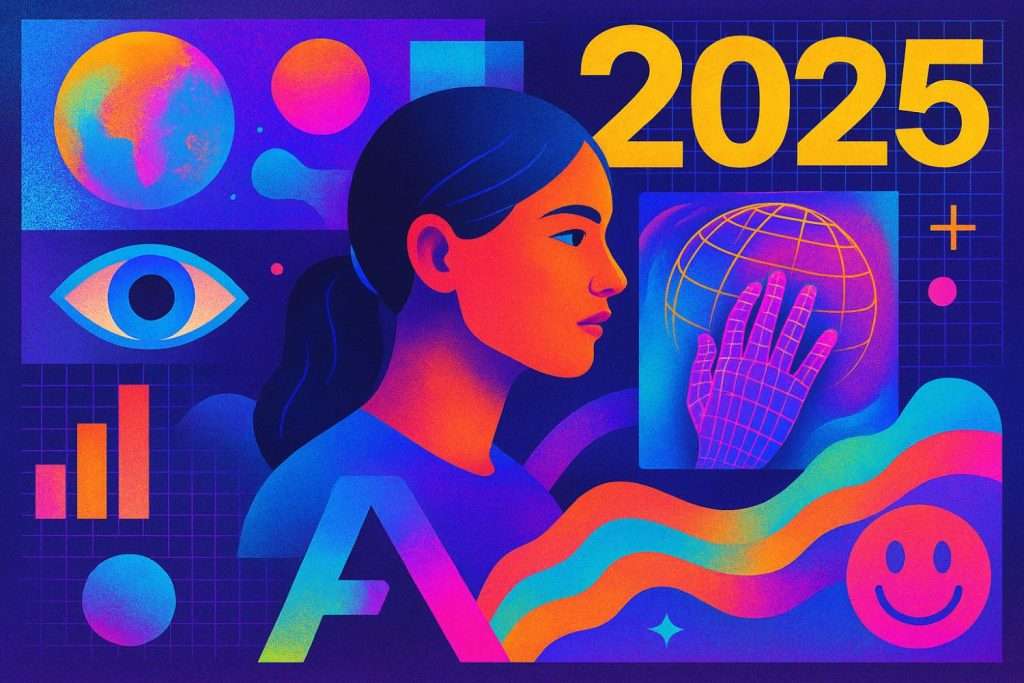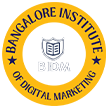
Graphic Design Trends 2025: A Look at the Future of Design
Introduction
As we get closer to 2025, graphic design is getting more and more interesting. This is because of new technologies, a growing awareness of environmental problems, and a never-ending yearning for stories that people can relate to. Keeping up with design trends isn’t just a fun trick; it’s your guide in a world where colours, pixels, and purposes are continually changing. This article will talk about five big trends that are changing graphic design this year: immersive visual narrative, expressive typography, sustainable design, bold minimalism, and AI-augmented creative collaboration. Each one offers both inspiration and strategy—helping you craft visuals that feel as authentic as they are ahead of the curve.

Table of Contents
1. Immersive Visual Storytelling & AR Integration
Graphic design in 2025 refuses to stay flat. Instead, it leaps into our world—fluid, engaging, and often multisensory. Augmented reality (AR) experiences are weaving themselves into brand identity, packaging, and marketing. Think of posters that spring to life via smartphone or product labels that trigger animated interviews when scanned. This trend isn’t novelty—it’s a powerful path for storytelling.
Why it matters: Consumers crave experiences, not just visuals. AR-driven content invites audiences into the narrative. Brands including IKEA and Nike are already using AR to allow customers to ‘try before they buy’ from the comfort of their homes. In design portfolios, too, AR gives creatives an opportunity to showcase depth and dynamism rather than static layouts.
How to get started: Keep your storytelling human. Start with a simple idea: make a product reveal come to life, add a pop-up tale, or put data visualisations on top of infographics to get people to interact. Use tools like Adobe Aero, Spark AR, or web-based AR frameworks that make it easy to make prototypes. The point isn’t to have showy tech for its own purpose; it’s to make the story and emotional connection stronger.
2. Fluid Typography & Expressive Lettering
Typography in 2025 is anything but fixed. Fluid, responsive, and emotionally expressive, it’s designer-driven and often hand-crafted. We’re seeing beautifully distorted letterforms, liquid transitions, and text that adapts its shape to motion or environment—whether in TV idents, motion graphics, or web headers.
Why it matters: In a saturated visual world, typography that feels alive draws the eye and lingers in memory. It can soften a message or inject a playful edge. Whether your project is about education, tech, or wellness, expressive lettering offers nuance and personality in ways a standard font simply can’t.
Best practices: Start with sketching—hand-drawn letterforms usually feel more human. Make them digital by turning them into variable fonts or frame-by-frame motion. Think about how the typeface moves, breathes, and reacts. Does it extend like water? Does it throb with emphasis? Make sure that readability is still a top concern. Being expressive should make meaning clearer, not harder to understand.
3. Sustainable & Purpose-Driven Design
Design is ethics in action. In 2025, sustainability isn’t just a buzzword—it’s a filter for every decision. From eco-friendly printing methods and recycled materials to inclusive imagery and mindful messaging, sustainable design reflects what audiences now demand: brands with values.
Why it matters: Designers are storytellers of values, and modern audiences can see through empty claims. Purpose-driven design builds trust—and creates visuals that feel meaningful rather than manufactured. Sustainability-aware packaging, inclusive representation, and clear messaging around environmental responsibility resonate deeply.
Applications: Use earthy color palettes, upcycled textures, and biodegradable or digital-first formats. When designing campaigns, highlight the people and processes behind the product—show the artisan, the craft, the reclaim in the journey. Purpose-driven design forges emotional bridges grounded in real care, not marketing mirrors.
4. Bold Minimalism & Negative Space Reimagined
Minimalism has matured. Bold simplicity married with strategic negative space creates visuals that feel architectural, confident, and timeless. In 2025, emerging graphic design often features single-strike typography, oversized imagery, or monochromatic layouts punctuated by one accent color.
Why it matters: With information overload reigning, minimalism cuts through the noise. It feels classy, considered, and commanding. In digital contexts, where attention spans hover, bold minimalism lets crucial messages land instantly.
How to apply it: Identify the core idea of your design and remove everything that doesn’t reinforce it. Use large-scale imagery or type and embrace the “quiet zones” that let the eye rest. Pair minimal layouts with subtle textures or micro-interactions for depth. The power of what’s unsaid—or unshown—can outweigh what’s present.
5. AI-Augmented Creative Tools & Collaboration
AI doesn’t replace the creative, it empowers the creative. In 2025, AI tools—from generative image assistants to layout suggestions—are becoming trusted partners in the studio. Designers use AI for ideation, rough concepting, or exploring typographic variations, reserving their energy for the inclusive and meaningful parts of creation.
Why it matters: AI can turbocharge ideation and iteration, freeing designers to focus on purpose, emotion, and narrative—areas where human nuance still reigns supreme. But there’s nuance in the “augmented” part; the human hand must still guide intent, ethics, and authenticity.
Getting started: Explore tools like Adobe Firefly, Midjourney, or DALL·E for moodboarding or visual brainstorming—but always rework AI output through your creative lens. Be mindful of reliance—or uncredited mimicry. Use AI to spark, not to settle. Keep in mind that creativity doesn’t come from great images; it comes from the context, empathy, and understanding you contribute.
Conclusion
Graphic design in 2025 looks both ahead and back. It’s immersive but purposeful, expressive but simple, eco-friendly but high-tech.The future isn’t in flashy tools or short-lived looks; it’s in how we put meaning, heart, and honesty into everything we make.
If you’re a designer, this is your invitation: use AR, develop expressive typography, tell tales that matter, and let quiet speak in huge places. Don’t let AI be you; let it work for you. The need to connect with others is what design is all about. I believe that the pulse will only get stronger in 2025.



